Understanding the Foundations of Behavior Management in Autism
Effective behavior management is central to supporting children with autism, offering pathways to improve social, communication, and daily living skills. The cornerstone of successful intervention is a well-structured Behavior Intervention Plan (BIP) tailored to meet each child's unique needs. This article explores the essential components, development steps, strategies, collaborative involvement, common pitfalls, and ongoing monitoring required to establish an impactful BIP.
Core Components of a Behavior Intervention Plan for Autism
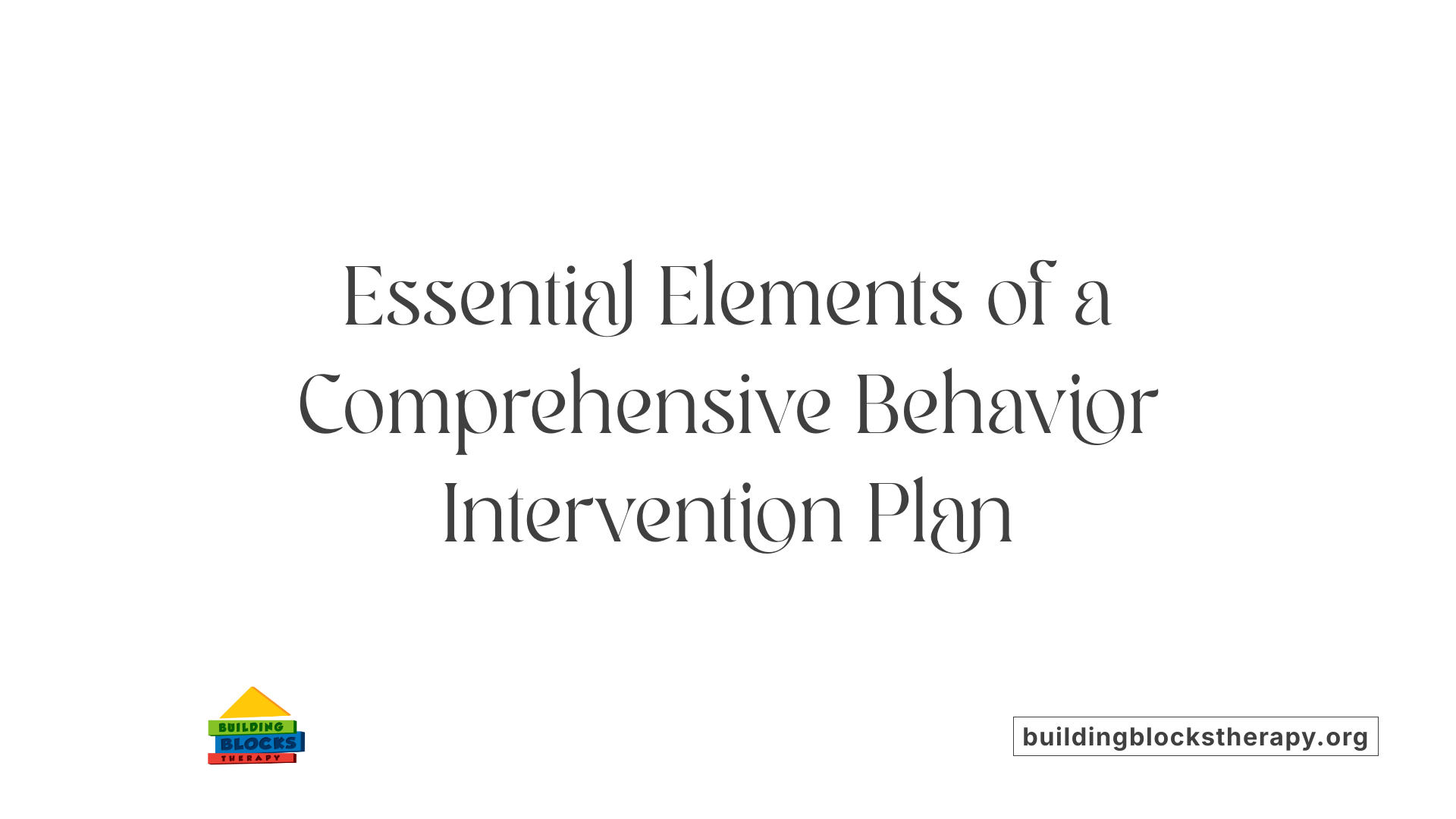
What are the essential components of a behavior intervention plan (BIP) for children with autism?
A well-structured behavior intervention plan (BIP) is vital for managing challenging behaviors in children with autism. It typically includes a detailed description of the targeted behaviors, explaining what specific actions are problematic.
The BIP is grounded in a thorough functional behavior assessment (FBA). This assessment investigates the reasons behind behaviors, such as seeking sensory input, escaping tasks, gaining attention, or accessing preferred items or activities.
Based on the FBA, the plan establishes precise behavioral goals and objectives aimed at reducing undesirable behaviors and promoting positive alternatives. These goals follow SMART criteria—specific, measurable, attainable, realistic, and time-bound.
Interventions are tailored to the identified functions of the behaviors. They include antecedent modifications—such as environmental adjustments and scheduling strategies—to prevent problem behaviors before they occur.
Teaching replacement behaviors is crucial. These are appropriate actions that serve the same function as the problematic behaviors, helping children learn healthier ways to communicate or cope.
In addition, the BIP outlines crisis intervention procedures for managing severe or emergency situations. Environmental and educational adjustments, like sensory accommodations or visual supports, are embedded to facilitate behavior regulation.
Supporting social skills development is another core element. Techniques such as social stories, modeling, and role-playing are incorporated to improve peer interactions and communication.
Finally, ongoing data collection and progress monitoring are emphasized. Regular tracking of behavior frequency, intensity, and context allows practitioners and caregivers to evaluate effectiveness and make necessary adjustments. Active involvement of parents and multidisciplinary team members ensures consistency and success of the behavioral goals.
Implementing these components ensures a comprehensive approach, fostering positive change and supporting the child's overall development.
Step-by-step Process for Developing and Implementing a BIP
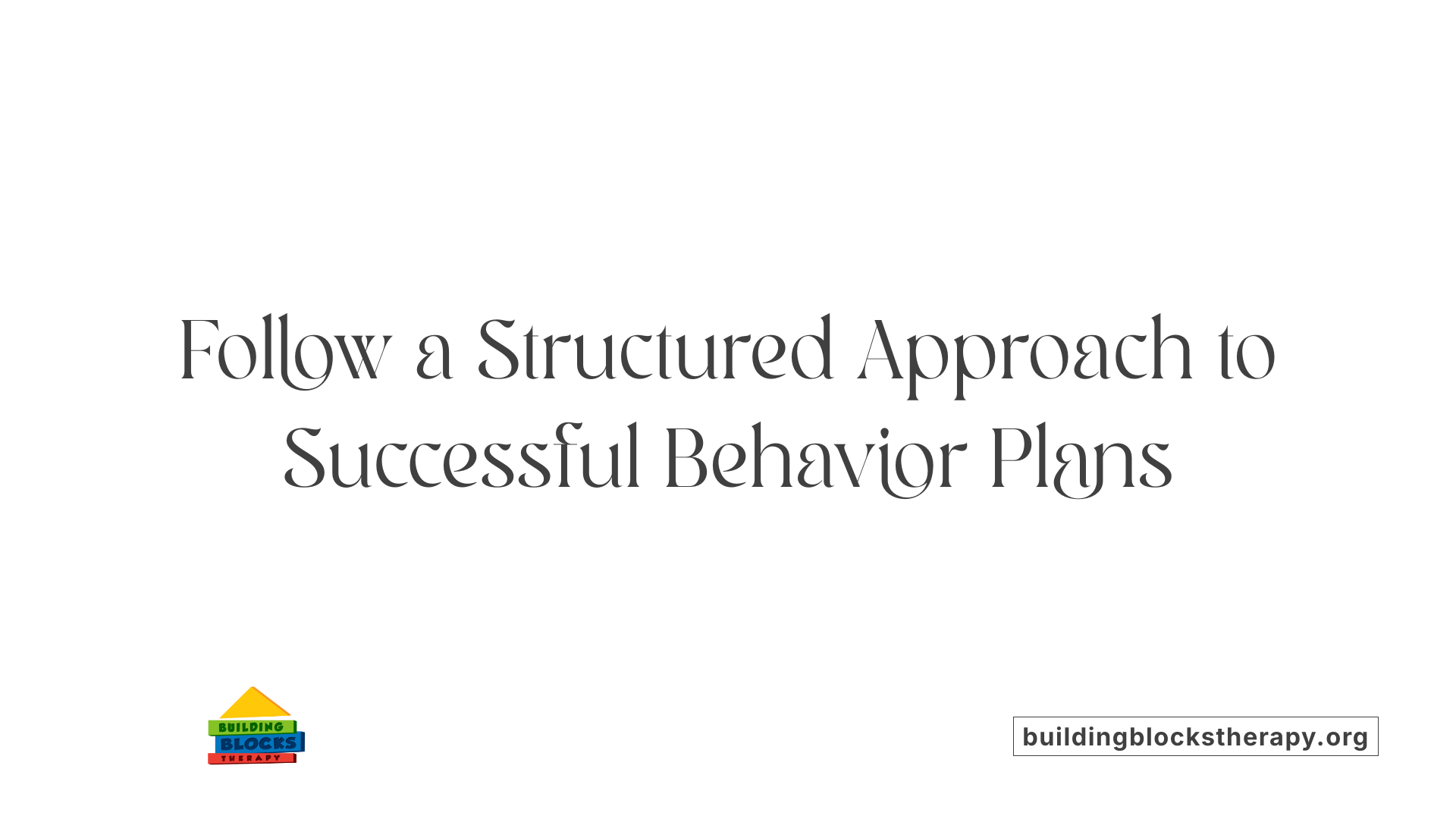
What are the key steps involved in developing and implementing an effective behavior intervention plan for autism?
Creating an effective behavior intervention plan (BIP) involves several important steps, starting with a thorough assessment. The first step is conducting a Functional Behavioral Assessment (FBA). This involves observing the child and gathering information from family members, teachers, and other caregivers to understand why certain behaviors occur. The goal is to identify the underlying function or purpose of the behaviors, such as seeking sensory input, escaping from tasks, or gaining attention.
Once the FBA is complete, the next step is defining target behaviors precisely. Clear, measurable descriptions of behaviors help everyone recognize and address them consistently. It’s also essential to determine replacement behaviors that serve the same function but are more appropriate for the child.
With this foundation, strategies are selected based on evidence and tailored to the child’s needs. These include proactive antecedent strategies, such as visual schedules or sensory tools, and reinforcement techniques like praise, tokens, or preferred activities to encourage positive behaviors. The plan should set realistic and measurable goals, ensuring they are achievable within a given timeframe.
Implementing the plan requires the involvement of all stakeholders—parents, teachers, therapists—and a commitment to consistency. Training caregivers on how to apply strategies, use reinforcement, and respond to behaviors is vital for success.
Ongoing data collection is necessary to monitor progress. This includes tracking the frequency, duration, and intensity of target behaviors and noting any triggers or changes in the environment.
Regular review meetings help evaluate the effectiveness of the BIP. Based on collected data, the plan should be adjusted as needed to better meet the child's evolving needs and to address any challenges in implementation.
Leveraging AI-based tools can greatly enhance this process by analyzing behavioral data, suggesting personalized interventions, and supporting decision-making. These technologies help ensure the BIP remains dynamic, evidence-based, and effective throughout its implementation.
Effective Strategies and Best Practices in Autism Behavioral Intervention
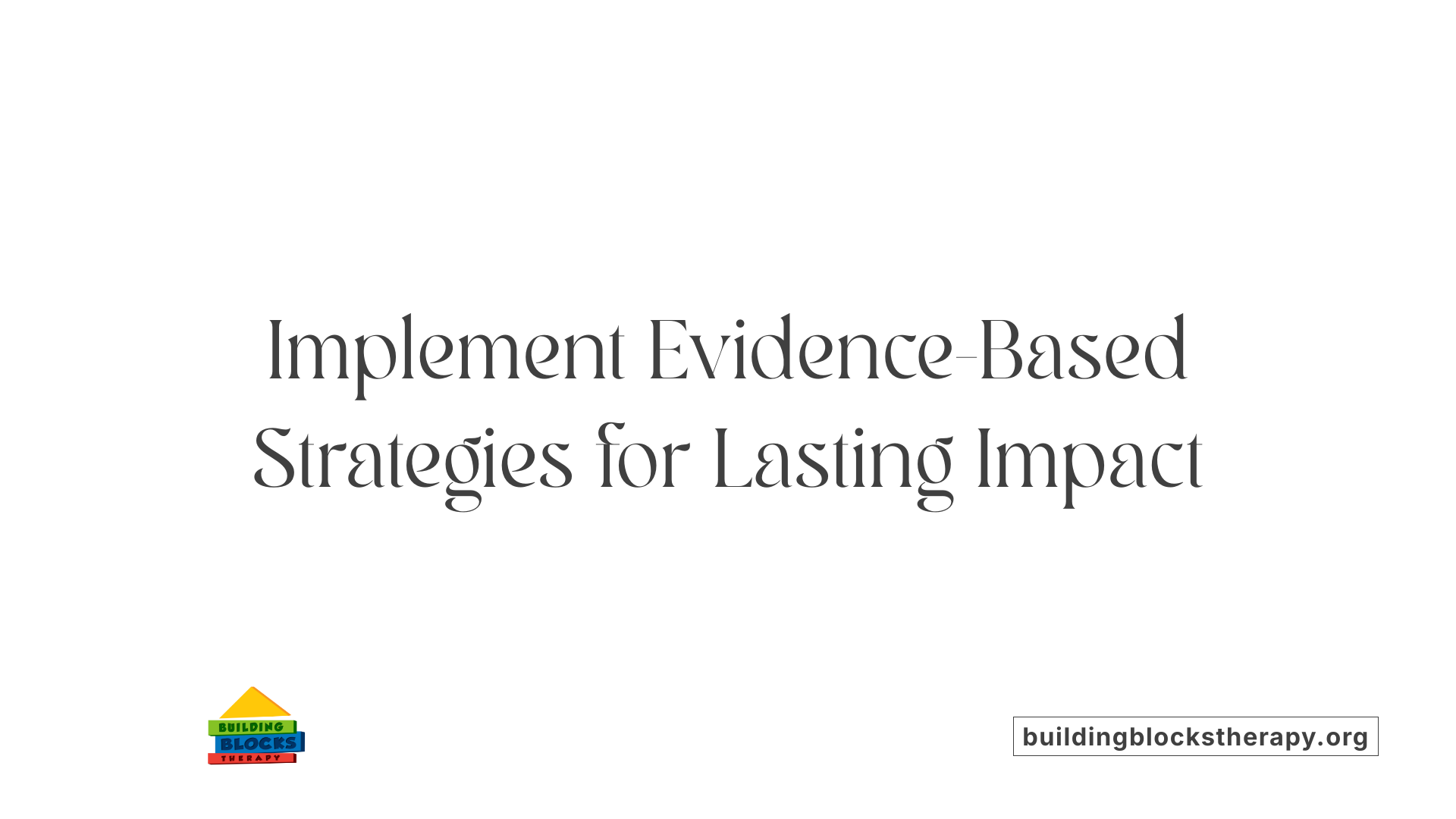
What strategies and best practices are recommended for behavioral intervention in autism?
Implementing effective behavioral strategies in autism requires a foundation of evidence-based techniques such as Applied Behavior Analysis (ABA) and positive reinforcement. These methods focus on encouraging desirable behaviors and reducing challenging ones by rewarding progress and teaching new skills tailored to each child’s needs.
Creating a comprehensive Behavior Management Plan (BMP) or Behavior Intervention Plan (BIP) is essential. Such a plan should include detailed descriptions of target behaviors, identifying triggers, and specifying replacement behaviors the child can learn. Visual supports, like token boards and social stories, play a significant role in helping children understand expected behaviors and routines.
Environmental modifications and sensory supports are also crucial. Adjustments like seating arrangements, sensory tools such as noise-canceling headphones, and scheduled breaks help children manage overstimulation and sensory sensitivities. Establishing predictable routines minimizes surprises, providing a sense of stability and reducing behaviors driven by anxiety or disorganization.
Respecting sensory needs and boundaries is fundamental. Tailored interventions that consider individual sensory profiles, along with techniques like mindfulness and promoting a positive attitude, significantly impact behavior positively.
Early intervention, particularly intensive and individualized methods like Early Intensive Behavioral Intervention (EIBI), combined with ongoing behavioral assessments, ensures that interventions are adapted based on progress. Utilization of data collection and regular reviews by trained professionals facilitate informed decision-making.
Collaboration among families, educators, and behavioral specialists is vital for consistency. Training parents and caregivers in implementing strategies supports generalization of skills across different settings and promotes sustained progress.
Avoiding common pitfalls—such as vague goals, inconsistent implementation, or neglecting skill development—is critical. Emphasizing a team approach, maintaining flexibility, and continuously adjusting strategies based on data help optimize intervention outcomes.
In summary, applying a combination of evidence-based practices, personalized planning, sensory considerations, structured routines, and collaborative efforts forms a comprehensive approach to effective behavioral intervention in autism.
Role of Collaboration Among Parents, Caregivers, and Professionals
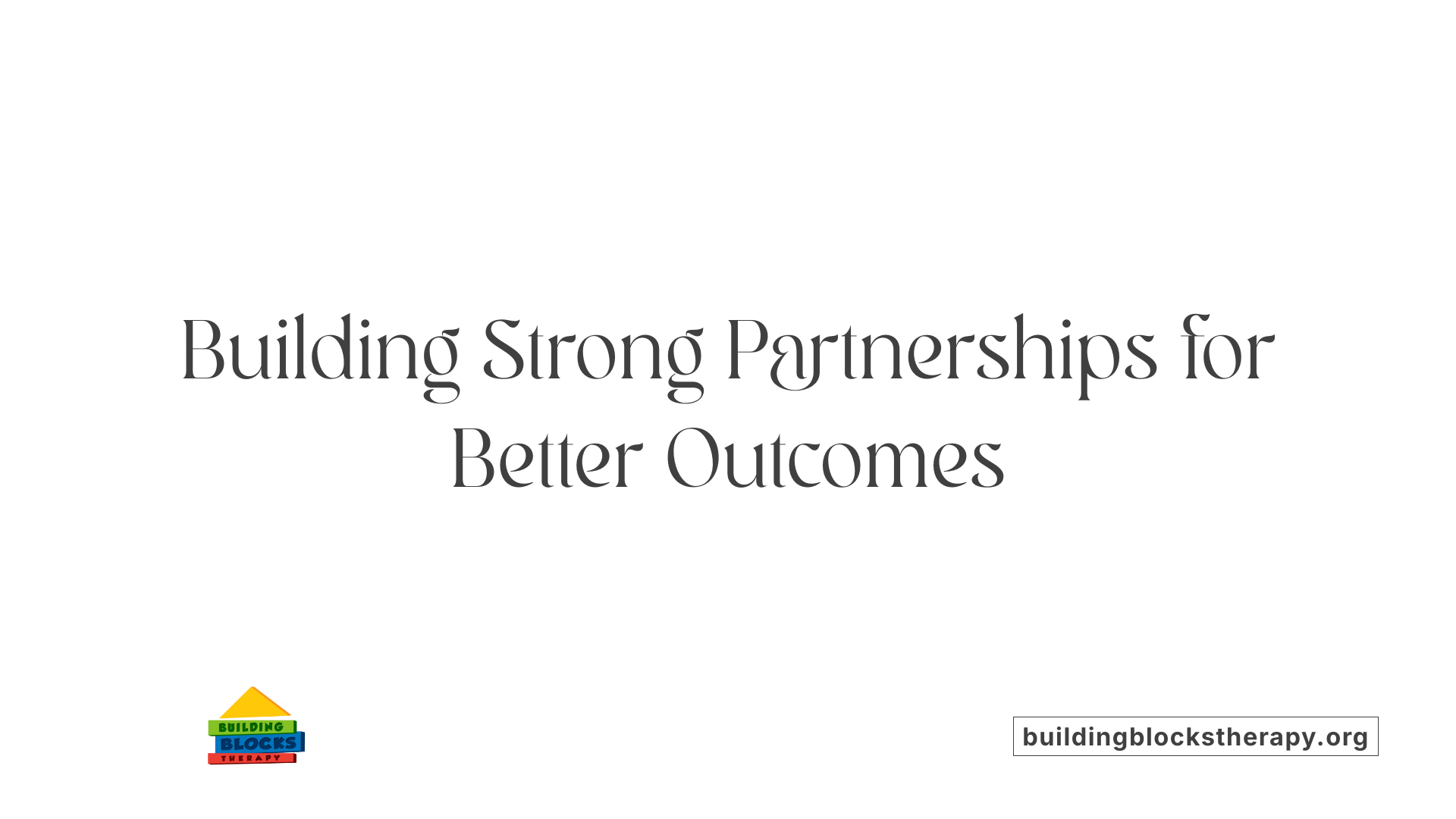
How can parents, caregivers, and professionals effectively collaborate in designing and implementing a behavior intervention plan?
Collaborative efforts among parents, caregivers, and professionals are vital to creating and executing an effective behavior intervention plan (BIP). This process begins with transparent and consistent communication. Sharing assessment results and clearly defining goals ensures everyone understands the purpose of the plan and their role in its success.
Early parent involvement is especially important. When families are engaged from the start—during assessments and goal-setting—they bring valuable insights into the child's behaviors in various settings. This input helps professionals tailor interventions that are relevant and practical for home and school environments.
Providing training and ongoing support to families is essential. Professionals, such as behavior analysts and therapists, should offer resources, demonstrate strategies, and encourage questions. Regular feedback sessions foster trust and allow adjustments based on what works or doesn't.
Consistency across settings enhances the effectiveness of interventions. When parents and teachers implement similar strategies and use shared data collection methods, children experience unified support. Maintaining open channels of communication—via meetings, progress reports, or digital tools—keeps everyone aligned and informed.
Cultural responsiveness and empathy are also fundamental. Recognizing the family's values, language, and cultural practices promotes respectful collaboration and ensures interventions are culturally appropriate. Building trust and rapport creates a strong partnership where families feel valued and understood.
Data-driven decisions underpin successful collaboration. Collecting and reviewing behavioral data help identify what strategies are successful and where adjustments are needed. This scientific approach supports transparency and accountable progress monitoring.
Addressing stress and burnout among caregivers and professionals is crucial. Recognizing the emotional and physical demands involved, providing support networks, and encouraging self-care can improve engagement and sustain collaboration.
Ultimately, empowering families in planning and decision-making fosters confidence and ownership of intervention strategies. When families are active partners, the plan is more likely to be consistent, culturally appropriate, and effective in helping children develop positive behaviors.
Common Pitfalls and How to Avoid Them
What are common pitfalls to avoid when creating a behavior intervention plan for autism?
Creating an effective behavior intervention plan (BIP) requires careful attention to detail and a deep understanding of each child's unique needs. One common mistake is misidentifying the function of problematic behaviors. Without conducting a thorough Functional Behavior Assessment (FBA), interventions risk targeting symptoms rather than underlying causes.
Relying heavily on punishment can be counterproductive and may increase anxiety or escalation. Instead, focus on positive reinforcement and teaching new, functional skills that can replace challenging behaviors. Consistency across all environments—home, school, and community—is vital. Staff, parents, and caregivers all need to apply the strategies uniformly to see progress.
Ignoring environmental factors is another typical pitfall. Sensory needs, lighting, noise levels, and scheduled routines significantly influence behavior. Adjusting these factors can prevent triggers and promote positive responses.
Inadequate training for staff and caregivers also hampers progress. Proper education and ongoing professional development ensure everyone understands the strategies and their responsibilities. Skill-building should be emphasized alongside behavior reduction, fostering development in social, communication, and daily living skills.
Goals or objectives that are vague or unrealistic can discourage progress and cause frustration. Goals should follow the SMART criteria—specific, measurable, attainable, realistic, and time-bound. Regular data collection and plan revisions are necessary—failure to do so can cause the plan to become ineffective as the child's needs evolve.
Family involvement is crucial; neglecting to include parents or neglecting to coordinate with them can hinder skill generalization and reduce the effectiveness of the intervention. Recognizing individual differences ensures that interventions are personalized, respecting each child's strengths and challenges.
By avoiding these common pitfalls—such as misidentification of behavior causes, over-reliance on punishment, inconsistency, neglecting environmental influences, and inadequate training—caregivers and professionals can develop more effective, compassionate plans. This approach improves behavioral outcomes and supports each child's overall development and well-being.
The Role of Data Collection and Ongoing Monitoring
What is the role of a behavior intervention plan in managing autism-related behaviors?
A behavior intervention plan (BIP) is an essential tool in supporting children with autism by outlining specific strategies to modify behaviors. It is based on thorough assessments, such as the Functional Behavior Assessment (FBA), which helps identify why a behavior occurs. The BIP serves to reduce negative behaviors and promote positive, functional skills through tailored interventions.
Importance of data in assessing progress
Data collection provides objective measures of a child's behavior over time. It helps determine whether the interventions are effective and if behaviors are improving. Consistent data allows professionals and caregivers to see actual trends rather than relying solely on anecdotal observations.
Methods of data collection (checklists, charts, report cards)
Multiple methods are used to gather data effectively:
- Checklists: These serve as quick reference sheets to mark presence or absence of behaviors.
- Charts: Visual representations like line graphs track behaviors over days, weeks, or months.
- Report cards: Summaries issued during team meetings compile data points and progress notes for review.
Frequency of review sessions
Regular review sessions, often monthly or bi-weekly, are vital for analyzing data and making informed decisions. These meetings involve team members—including therapists, teachers, and parents—to discuss progress and necessary adjustments.
Analyzing data for effectiveness
Analyzing collected data involves looking for patterns and evaluating whether behavioral goals are being met. This process helps identify triggers, reinforcers, and whether strategies need modification. Data analysis supports evidence-based decision-making.
Adjusting strategies based on data
When data shows limited progress, strategies are revised. This may include changing reinforcement methods, modifying environmental triggers, or introducing new replacement behaviors. The flexibility to adapt plans ensures continuous improvement.
Documentation practices
Proper documentation involves recording daily behaviors, responses to interventions, and any environmental factors influencing behavior. Keeping organized records ensures accountability and provides historical data for ongoing evaluation.
Using data to inform decision-making
Data-driven decisions ensure interventions are tailored to the child's evolving needs. This approach helps avoid trial-and-error tactics, leading to more effective and efficient behavior management.
Monitoring generalization and maintenance of skills
Monitoring isn't limited to immediate behaviors but also includes how skills transfer across settings and are maintained over time. Consistent data collection in diverse environments helps confirm that positive behaviors are sustained.
Involving team members in data review
Involving parents, teachers, and therapists fosters a collaborative environment where everyone understands the child's progress. Multiple perspectives contribute to comprehensive analysis and more successful plan adjustments.
Conclusion: The Path to Effective and Sustainable Behavior Change
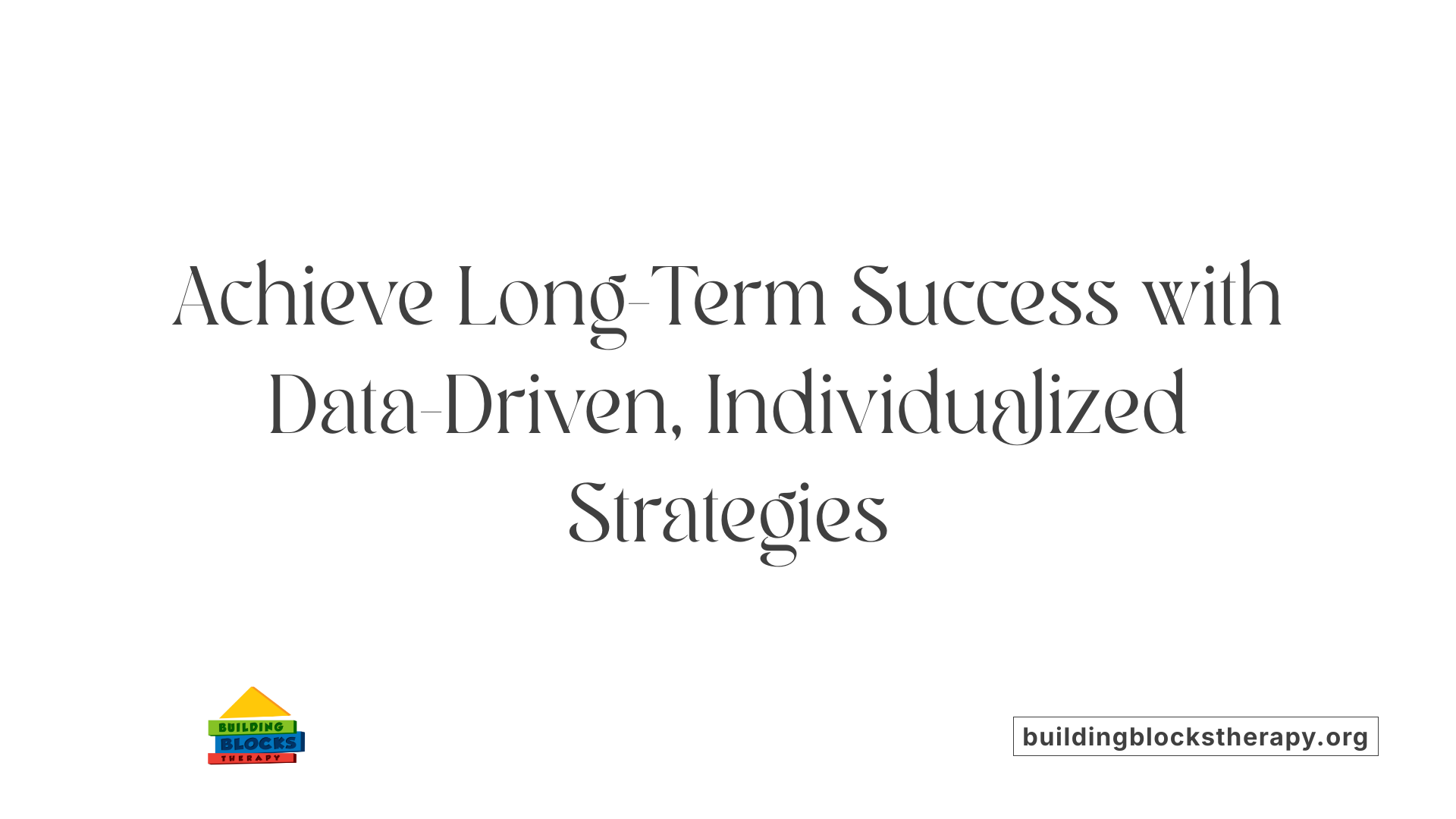
How does ongoing data collection promote continuous improvement?
Regular collection and review of behavioral data allow practitioners, parents, and educators to evaluate what strategies are working and where adjustments are needed. This ongoing process helps in refining interventions to better suit the child's evolving needs, ensuring that the behavior management plan remains effective over time.
Why is flexibility and individualization important?
Each child with autism is unique, with different triggers, strengths, and challenges. Tailoring the behavior intervention plan to address these individual differences increases its relevance and success. Flexibility allows for modifications based on progress or new behaviors, making the plan dynamic rather than static.
What role does training and support have?
Providing proper training for all caregivers and professionals involved is critical. When everyone understands the strategies and their purpose, consistency improves. Support from specialists like behavior analysts also helps in troubleshooting issues and maintaining motivation.
How does consistent implementation impact outcomes?
Consistent adherence to the plan across home, school, and community settings reinforces learning and reduces confusion. Consistency ensures that expected behaviors are praised and problematic behaviors are addressed uniformly, which is essential for sustainable change.
Why is monitoring progress and making adjustments necessary?
Behavioral progress isn’t always linear. Regularly reviewing outcomes and being willing to adjust interventions ensures that the plan remains aligned with the child’s current needs and life circumstances. It also helps prevent stagnation or setbacks.
How does empowering families and professionals contribute?
Involving families and professionals in the process enhances buy-in and long-term success. Training and active participation foster a shared understanding and commitment, making it easier to generalize skills across different environments.
What is the significance of creating a positive environment for change?
A supportive, non-judgmental environment reduces stress and shame related to behaviors. Incorporating positive reinforcement and sensory accommodations promotes cooperation and fosters a love for learning and growth.
| Aspect | Role | Impact | Additional Details |
|---|---|---|---|
| Data and collaboration | Drive ongoing improvements | Tailors interventions | Use checklists, charts, team meetings |
| Flexibility and individualization | Adapt to each child's needs | Maintains relevance | Adjust plans with new data |
| Training and support | Build caregiver capacity | Ensures consistency | Professional workshops, coaching |
| Consistent implementation | Reinforces learning | Achieves lasting change | Across all settings |
| Monitoring and adjustment | Keeps plan effective | Prevents stagnation | Regular reviews, flexible strategies |
| Family and professional empowerment | Strengthen involvement | Promotes generalization | Parent participation, team meetings |
| Positive environment | Encourage cooperation | Sustain motivation | Praise, sensory tools |
Building a Foundation for Lasting Change
Developing an effective Behavior Intervention Plan for children with autism is a dynamic, collaborative process grounded in thorough assessment, evidence-based strategies, and continuous data analysis. By understanding the unique functions of behaviors, setting clear, measurable goals, and involving families and professionals, caregivers can foster positive, sustainable changes. Training, consistency, flexibility, and regular monitoring ensure that the plan adapts to evolving needs and challenges. Ultimately, an individualized BIP empowers children with autism to develop meaningful skills, reduce problematic behaviors, and thrive in diverse settings. Establishing a comprehensive, evidence-based approach is essential in creating a supportive environment where children can reach their full potential and lead fulfilling lives.
References
- Behavior Management Plans for Autism: All You Should Know
- How are BIPs Designed for Students with Autism?
- Behavioral Interventions for Autism Spectrum Disorder
- How to Write a Behavior Intervention Plan (BIP) - How to ABA
- Behavior Intervention Plans: A BCBA's Real World Explanation
- What Is a Behavior Intervention Plan? - Child Mind Institute
- 8 Effective Behavior Management Strategies for Children with Autism
- Empowering Parents with Effective Behavior Intervention Plans






